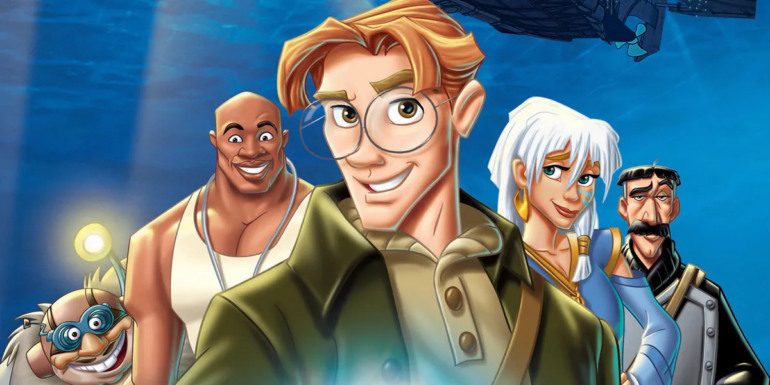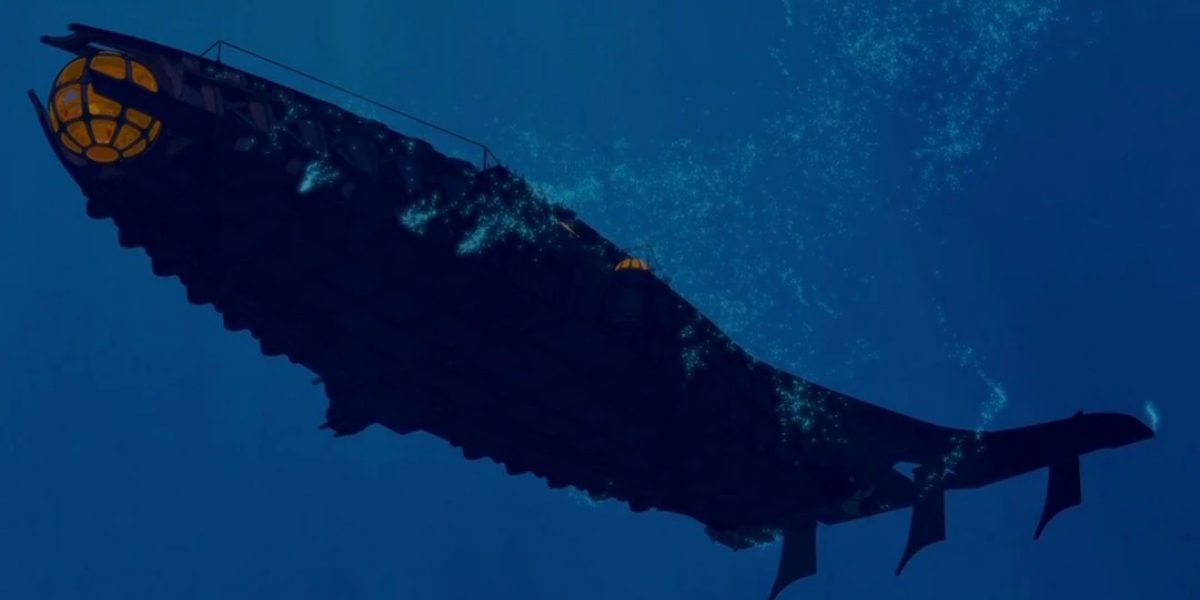

When you ask the average person if they’ve ever seen Atlantis: The Lost Empire, the most common response they’ll have is a blank stare or a brief moment of pause where they debate if they’re even familiar with the title. Atlantis is in the camp of Disney animated movies that were Post-Disney Renaissance, following classics like Aladdin, The Lion King, and Beauty and the Beast with films that were and are still well-liked but not reaching the historic highs and acclaim of their predecessors. Films like Lilo and Stitch, The Emperor’s New Groove, and Treasure Planet. Atlantis wasn’t exactly a hit at the box office, grossing around $180 million against a roughly $120 million budget—which by today’s box office standards would be cause for Disney executives to pull their hair out in panic—and the Rotten Tomatoes score sits at 49%, which is never the ideal like/dislike ratio, though Rian Johnson would be proud. It has received renewed interest following rumors and a potential elusive trailer for a live-action remake. Hopefully, this causes people to give it another look because, short of being perfect, Atlantis is one of the few Disney animated films that toe the line into being near the tier of their Renaissance Era films, and it didn’t even have to be a musical to do it.
Taking place in 1914, a linguist named Milo Thatch (Michael J. Fox) dreams of going on an expedition to prove the existence of Atlantis. While turned away from the academic community, Milo is introduced to a yoga-loving millionaire (John Mahoney) who is funding a massive excursion to prove just that. Along the way, Milo meets an assortment of eccentric characters and wild creatures and finds that the long-lost city has more to it than he could’ve ever imagined. He also finds that the people along the journey might not be as altruistic as he was expecting.


Upon revisiting, what sticks out about the film is how non-kid-friendly it is. That’s not to say that kids can’t enjoy it. If you grew up with it, you’re one of the lucky few, and you should give yourself a high-five. It’s more the fact that it rarely feels like it’s pandering to a younger audience. This is one of the funnier animated Disney films that still manages not to be a comedy. For the most part, all of the comedy comes from sarcastic banter between characters—Joss Whedon was one of the writers on this, and it shows—and it’s the type of humor where you may not laugh, but you can appreciate the cleverness of the writing. Besides that, what makes the film stand out so firmly among Disney’s animated filmography, specifically post-Renaissance, is its sense of awe and adventure—a succinct word to describe it: Epic.
While the concept of a live-action version of the film sounds like it could be promising—though Disney’s track record in live-action remakes doesn’t boost a lot of confidence—the film’s shot composition and blending of hand-drawn and CGI animation makes it feel more cinematic than a lot of animated films. There’s a sense of depth and perspective when the characters travel through deep caverns or overlook Atlantis. Not to mention the sheer sense of scale when you see a character in the foreground staring at something massive like the red gyro evac ascending before the dogfight in the climax or the stone guardians emerging from the water. You feel the size and weight of what’s happening on screen. The best moment to encapsulate this is when the Ulysses submarine dives, and James Newton Howard’s powerful score grows as it slowly descends into the ocean. It takes its time, and once you finally see Milo appear so small in the observation deck as it passes by, you get a sense of how massive this thing is, and it brings you into the potential of what adventure may come from this voyage. From then on, you’re along for the ride and a part of the journey with these characters.
It’s ironic that the Ulysses is such an iconic visual of the movie—it’s on most of the posters and was a centerpiece of the trailers—because they trash it almost immediately. That’s another thing this film has is high stakes. Early in the voyage, the film shows that it’s not afraid to get its hands dirty with collateral damage. The first major action set piece is the attack of the Leviathon, and it leads to the deaths of dozens of crewmembers aboard the Ulysses. It’s like the film suddenly turns into a James Cameron film. The sudden panic of water flooding in and crew members trying to survive feels like something out of The Abyss or Titanic. Down to the fact that Ramirez (Jacqueline Obradors) has to seal the doors before the water gets in, leaving one crewmember to drown—the filmmakers didn’t have to add that detail in, but it makes the situation all the more dire and terrifying.


Those stakes get even higher once it gets to the climax. Usually, in Disney animated films, the intensity is more emotional and personal rather than due to the gravity of the situation. It’s often the risk of losing a character we’ve grown to like that keeps us invested and makes us want the hero to succeed, but rarely does it involve the destruction of an entire civilization. That’s what’s at stake here. By the end, if Milo fails, not only does he lose his new friend, Kida (Cree Summer), but the entire city of Atlantis dies. So, when he proclaims, “We’re gonna save Atlantis, or we’re gonna die trying. Now, let’s do it!” You feel the weight of responsibility and that it’s all on them. That being said, the intensity is lessened a bit because, for a select few out there—you know who you are—it’s hard to hear Michael J. Fox yell at the top of his lungs without also hearing, “I’m Stuart Little!”
Speaking of Michael J. Fox (an actor so universally beloved that even Tom Hanks is probably jealous of how likable he is), his portrayal as Milo is really what holds the movie together. He perfectly plays the role of a bookish nerd who’s out of his element but is excited to be a part of the ride, and his final turn to become the hero of the story makes the finale even more exciting and his eventual triumph against the stronger and more experienced Rourke (James Garner) even more satisfying. Just a side note: Rourke has one of the most violent villain death scenes you’ll ever see in a kids’ movie, especially by Disney. It might not be as dark as Clayton’s death in Tarzan, but the image of Rourke becoming blue and crystallized is the stuff of nightmares, and his eventual death via propellor blades is hardcore. Especially considering he was probably on the verge of dying anyway, but whatever. A roaring fire might as well have a little extra kindling.
As mentioned previously, Atlantis: The Lost Empire may not be a perfect movie, but the highs that it reaches stand out among Disney films and animated films in general. Despite its short running time, a lean 90 minutes if you exclude credits, it encapsulates a sense of scale and adventure that you rarely get from kids’ movies, especially animated movies. It feels like a blockbuster film, just with the added charm of beautiful animation. It doesn’t always get locked in with Disney’s best-animated entries, but it deserves to be in the conversation or, at the very least, given a chance by those who may have overlooked it.
